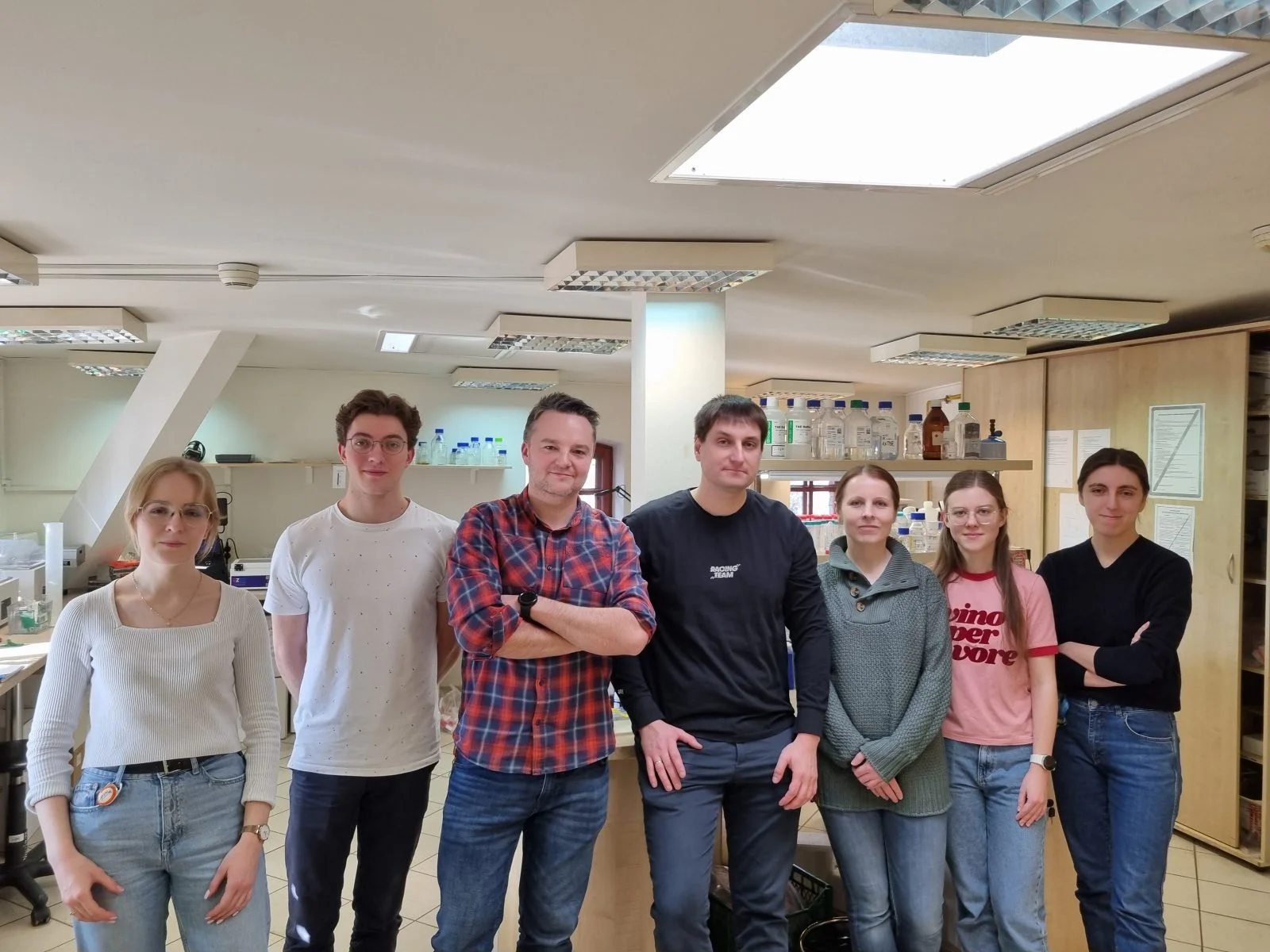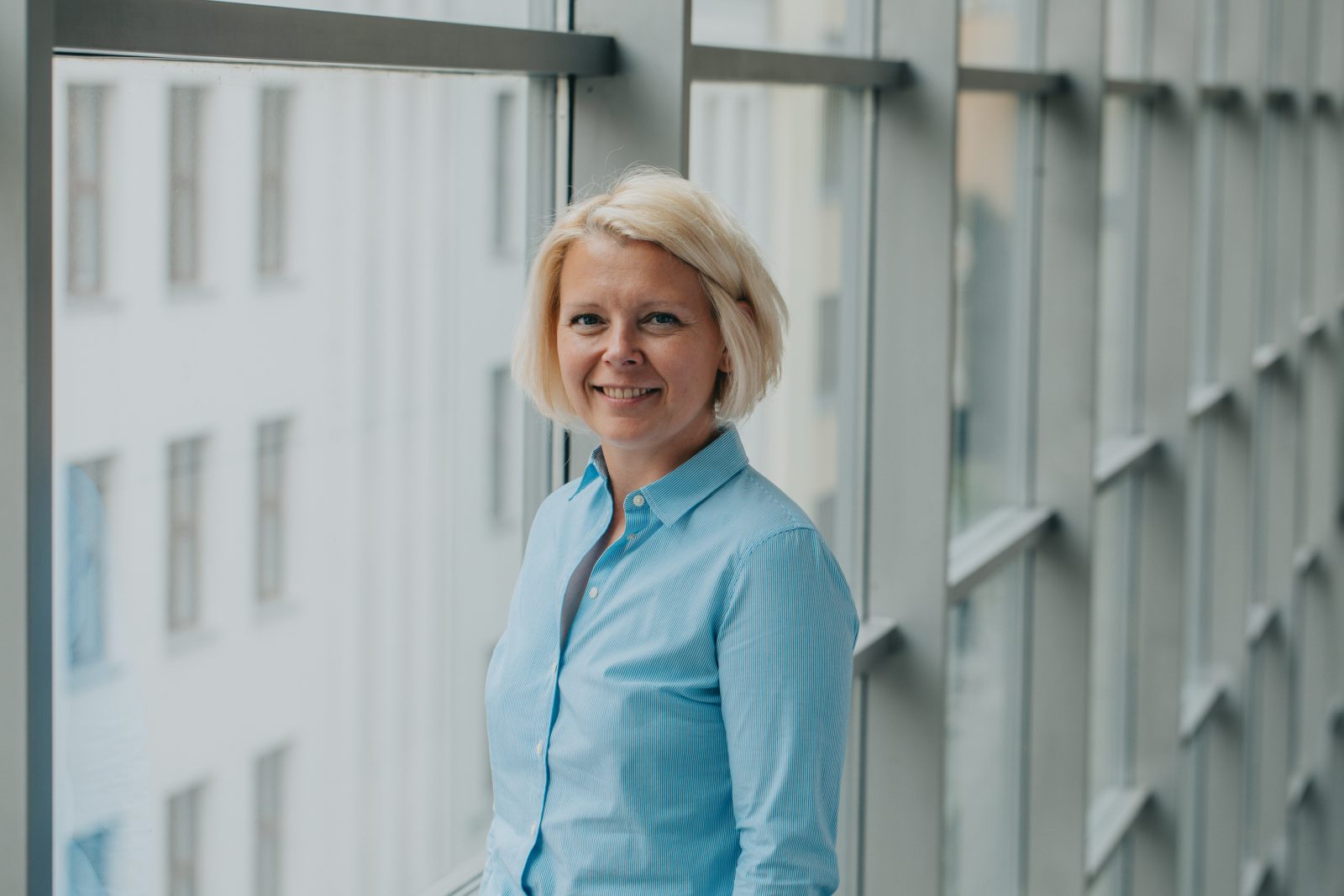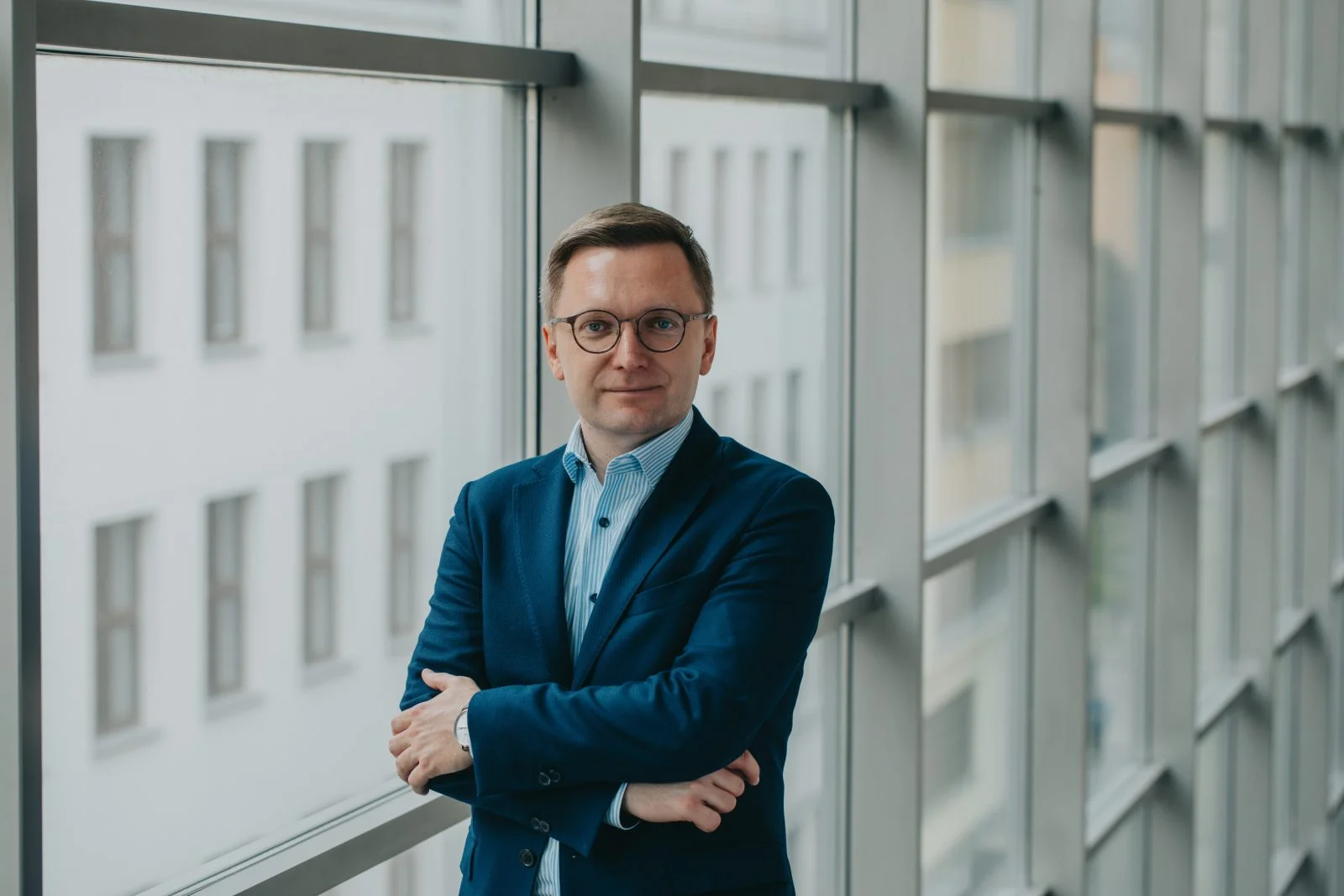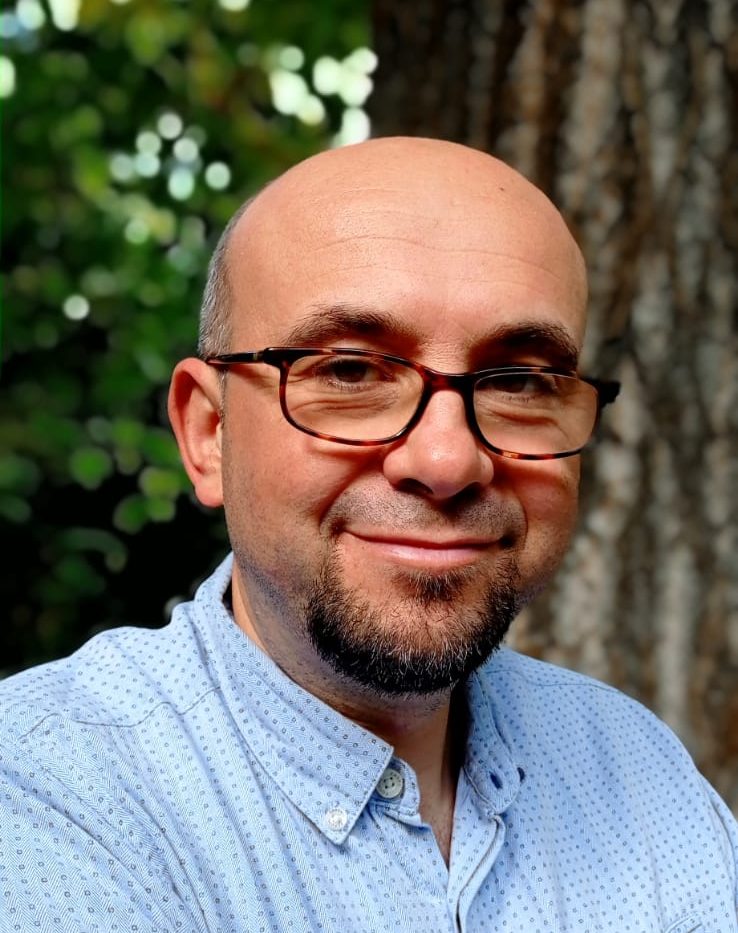
OPUS grants for researchers of the University of Wrocław
The National Science Centre (NCN) has awarded over PLN 708 million to support research projects in the OPUS 28 and SONATA 20 calls for proposals, which were concluded on 27 May 2025. A total of 441 researchers will receive funding, including scientists from our University.
An OPUS grant of PLN 2,440,000 was awarded to prof. dr hab. Dagmara Jakimowicz from the Faculty of Biotechnology, for her project entitled Badanie powiązań między cyklem komórkowym prątków, osłonami komórkowymi a wrażliwością na antybiotyki – rola interakcji ParA-DivIVA (eng. Exploring the Link Between the Mycobacterial Cell Cycle, Cell Envelope, and Antibiotic Susceptibility: The Role of ParA-DivIVA Interplay )
– In our research, we will focus on mycobacteria – bacteria known as dangerous pathogens causing tuberculosis and leprosy – explains prof. Dagmara Jakimowicz, Head of the Department of Molecular Microbiology (UWr Faculty of Biotechnology). – These bacteria are resistant to environmental factors and many antibiotics due to their distinctive and impermeable cell envelopes.
As part of the project, the researchers aim to investigate how the processes involved in the synthesis of mycobacterial cell envelopes are regulated and how they are coordinated with the proliferation of these bacteria. – We hope that the results of our research will contribute to a better understanding of mycobacterial biology and potentially help identify new antibiotic targets and develop new anti-tuberculosis therapies – adds prof. Dagmara Jakimowicz.
Dr Karol Kramarz has been awarded an OPUS grant (PLN 3,679,520) for his project entitled Wpływ SUMOilacji na czasoprzestrzenną odpowiedź komórek eukariotycznych na stres replikacyjny (eng. SUMOylation control over spatiotemporal response to replication stress in eukaryotic cells) The research aims to advance our understanding of DNA repair mechanisms in eukaryotic cells.
– Defects in the process of genetic information replication – known as replication stress – pose a serious threat to genome stability and can underlie the development of cancer in humans – explains dr Karol Kramarz of the Excellence Incubator – Research Centre for DNA Repair and Replication at the Faculty of Biological Sciences. – It is particularly important to understand the regulatory mechanisms behind complex DNA repair processes, such as SUMOylation. This involves attaching a small molecule called SUMO (Small Ubiquitin-like Modifier) to repair proteins, which affects their activity, stability and localisation.
To prevent harmful genomic alterations caused by disrupted DNA replication, cells have evolved advanced repair pathways that correct errors and precisely regulate the replication process. These repair mechanisms are governed by post-translational modifications – chemical changes to proteins after their synthesis.
One of the key post-translational modifications is SUMOylation, which is essential for cell viability and plays a fundamental role in DNA repair processes. Disruptions in SUMOylation can lead to a range of human diseases, including cancer. Although SUMO was discovered nearly 30 years ago, many aspects of this modification remain poorly understood. SUMOylation is especially important in the cellular response to replication stress.
– My previous research in this area has demonstrated how SUMOylation regulates the resumption of DNA synthesis during replication stress through homologous recombination, using the model organism Schizosaccharomyces pombe – dr Kramarz explains. – Interestingly, I found that the repair of DNA damage associated with replication stress is highly organised within the three-dimensional structure of the cell nucleus and is coordinated by SUMOylation.

The fundamental questions underpinning the research project funded through OPUS 28 relate to how SUMOylation precisely regulates DNA repair within the crowded environment of the cell nucleus.
The findings could uncover unique features of SUMOylation, potentially enabling the targeted elimination of cancer cells. Since SUMO-dependent pathways are evolutionarily conserved in both yeast and human cells, these discoveries may pave the way for innovative cancer therapies that target specific regulators of SUMOylation.
An OPUS grant of PLN 1,125,558 has also been awarded to dr Urszula Bąk-Stęślicka from the Department of Heliophysics and Space Physics (Astronomical Institute, Faculty of Physics and Astronomy, University of Wrocław) for her project entitled Wielotemperaturowa analiza prekursorów CME (eng. Multiwavelength analysis of CME precursors).
– One manifestation of solar activity is coronal mass ejections (CMEs) – vast clouds of plasma ejected into space – explains dr Bąk-Stęślicka. – Some CMEs reach Earth, disturbing the planet’s magnetosphere and generating aurorae. Intense events can damage power grids and pipelines over large areas and disrupt radio communications. They also pose a risk to satellites. CMEs are driven by energy stored in twisted magnetic fields, but the exact mechanism of energy release remains unclear.
A classical CME, observed in white light, typically exhibits three distinct structures: a bright leading front, a dark coronal cavity, and a bright core, usually composed of dense material from an eruptive prominence. A very similar configuration is seen in quiescent (non-eruptive) phenomena: a bright coronal streamer surrounds a quiet coronal cavity, which itself encases a stable prominence. Such quiescent coronal cavities are most commonly observed near the solar poles, where they can persist for several days or even weeks.
– Even in these seemingly stable structures, we sometimes observe magnetic field reconfigurations that may lead to eruptions and CMEs – notes dr Bąk-Stęślicka. – These CMEs tend to be much slower than those associated with, for instance, solar flares. The cavities surrounding prominences are much larger than the prominences themselves, which allows for in-depth study of the magnetic structure prior to CME eruption. Since the activation phase of such eruptions can last several days, this gives us ample time to closely examine the conditions within the cavity.
The current project aims to analyse those cavities which, as a result of magnetic field restructuring, become eruptive and manifest as coronal mass ejections.

The research will be conducted in collaboration with international institutions, primarily in the United States.
Another OPUS grant (PLN 1,034,060) has been awarded to dr hab. Karolina Kremens, prof. UWr, from the Faculty of Law, Administration and Economics, for her project entitled Sprawiedliwość dla pokrzywdzonych 2.0: wykorzystanie nowoczesnych technologii w sprawach o zgwałcenie (eng. Justice for Victims 2.0: Leveraging Modern Technology in Rape Cases).
The project will also involve dr hab. Wojciech Jasiński, prof. UWr, dr Dominika Czerniak from the Department of Criminal Procedure, and dr hab. Tomasz Piekot from the Centre for Simple Polish at the University of Wrocław.
The aim of the project is to develop a standard for conducting rape investigations that reflects recent changes in the legal definition of the offence, the role of technology, and the specific needs of victims. By utilising modern technologies and redefining the legal framework of rape proceedings, the project seeks to create a more effective and victim-oriented approach to justice in the criminal process.


In recent years, the legal definition of rape has undergone significant reform in many EU countries. Traditionally, this definition was based on the presence of violence, threats, or the victim’s inability to resist. However, this paradigm is increasingly being rejected as inadequate, as it fails to account for situations in which victims are unable to respond due to fear, surprise, or deception.
A new approach – placing central importance on the lack of consent – is gaining broader acceptance. The redefinition of rape is viewed as a key mechanism for increasing the effectiveness of criminal proceedings, while better addressing the needs of victims.
These definitional changes are occurring in parallel with a major transformation of criminal procedure, where digital technology plays a vital role. This includes the introduction of advanced mechanisms such as predictive policing tools, the growing acceptance of digital evidence, and the increasingly frequent use of technology enabling remote criminal proceedings.


A new research project led by prof. Krzysztof Dębicki (Faculty of Mathematics and Computer Science, Institute of Mathematics), entitled Asymptotyczne własności funkcjonałów pobytu wielowymiarowych procesów gaussowskich w zbiorze (eng. Asymptotic properties of occupation functionals of multivariate Gaussian stochastic processes) (PLN 324,032), aims to develop new techniques for studying the properties of certain random processes related to the time spent within, or the entry to and exit from, a given set, in problems modelled by so-called Gaussian processes and fields.
The analysis of these problems is strongly motivated by both theoretical questions relevant to extreme value theory, and practical applications in modern probabilistic models – for example, in risk theory, actuarial and financial mathematics, and telecommunication networks. The richness and relevance of these issues make this research area a significant field for both stochastic modelling and probability theory.
– Within the scope of this project, we plan to analyse high excursions and the time spent at elevated levels by randomly evolving processes. We also intend to examine the properties of certain constants that appear in formulas for the probabilities of these random quantities occurring – explains prof. Dębicki.
– We expect to derive a new theoretical framework for the probability that a randomly developing process will eventually reach a high value or spend a significant amount of time in a distant set – he adds.
The theoretical results obtained will be illustrated through applications to problems such as modelling the simultaneous ruin probability of interdependent insurance companies and buffer overflow models in telecommunication networks.
An OPUS grant has also been awarded to dr Wojciech Białek from the Department of Biophysics, Faculty of Biotechnology at the University of Wrocław (PLN 2,198,112). Dr Białek will carry out the project entitled Rola małych regulatorowych RNA w stresie abiotycznym sinic (eng. Small regulatory RNAs in cyanobacterial abiotic stress).
Cyanobacteria are prokaryotes that grow through photosynthesis in a manner similar to plants. These microorganisms are the oldest oxygenic phototrophs, converting solar energy and CO₂ into bioenergy and contributing to 50–65% of the molecular oxygen essential for sustaining aerobic life on Earth. They are also known for their sustainable production of biofuels and other valuable secondary metabolites, as well as their ecological role, since many species are key primary producers. Unfortunately, they are particularly susceptible to harmful effects from excess light or UV radiation. Moreover, like virtually all living organisms, cyanobacteria must adapt to limiting nutrient concentrations and abiotic stresses such as high salinity.
In the face of global climate change and excessive fertilisation leading to increased salinity and nitrate pollution of surface waters, understanding cyanobacterial ecology is crucial to maintaining biodiversity, nutrient cycling, and overall ecosystem health. This, however, requires an understanding of the molecular mechanisms regulating their adaptation to environmental stresses.
Small regulatory RNAs (sRNAs) play a multifaceted role in bacteria, coordinating gene expression during various physiological processes, especially in stress adaptation.
– Although we possess extensive knowledge on nitrogen fixation and photosynthesis in cyanobacteria, we know relatively little about how they cope with abiotic stress – says dr Białek. – To address this gap, we plan to elucidate how different types of sRNAs interact specifically with target transcripts to regulate protein levels and maintain cellular homeostasis under stress conditions. Therefore, the aim of this project is to investigate the role of sRNAs in gene expression regulation during stress adaptation in the well-established model cyanobacterium Synechocystis sp. PCC6803.
– Based on our preliminary data identifying several novel sRNAs, we propose the working hypothesis that, in response to environmental stress, cellular sRNA profiles shift to enable selective degradation and accumulation of transcripts critical for cyanobacterial growth and survival. In doing so, we hope to clarify the role of specific sRNAs responsible for adaptation to abiotic stress – the scientist adds. In the long term, the outcomes of this research may lead to the development of strategies for improving higher plants and crops to adapt to suboptimal growth conditions.
In two cases, the University of Wrocław is a partner in the implementation of OPUS grants, thanks to prof. dr hab. Mariusz-Orion Jędrysek and dr Marek Malicki.
The first project is Tysiącletnie zmiany w SERbian paleoDUST (SERDUST) (eng. Millennial variations in SERbian paleoDUST). It is being carried out by the Silesian University of Technology (project lead: prof. dr hab. Denis-Didier Rousseau) with the support of our experts from the Faculty of Earth Sciences and Environmental Management, led by prof. dr hab. Mariusz-Orion Jędrysek. The project is valued at PLN 1,949,198.
The aim of the research is to calibrate a new tool for highly precise reconstruction of temperature changes during dust deposition in Europe over the last 100,000 years. Clumped isotope studies will be used for this purpose. UWr is the only university in this part of Europe where such research is possible and enables precise analyses.
– Loess sediments are very difficult to study geochemically in terms of climate; they can only be analysed indirectly because, chemically, they are almost silent when it comes to temperaturę – explains prof. dr hab. Mariusz-Orion Jędrysek (Isotope Geology and Geoecology Laboratory, Department of Applied Geology, Geochemistry and Environmental Management, Institute of Geological Sciences).
Quaternary loess deposits in the Carpathian Basin differ from those in Western and Central Europe due to the region’s unique geography and complex layering. The Carpathians and the Alpine ice sheet influence air movement, including humidity behaviour and particle transport. In the Middle Danube Basin, most windblown material comes from nearby regions, and dominant winds blow from the north and southeast.
There is a detailed palaeoenvironmental record from the last 130,000 years at the Surduk site on the Danube in Serbia. Within this record lies a soil layer known as the “Surduk soil”, which is similar to the Lohne soil in the Nussloch loess sequence in Germany. It corresponds to the period approximately 38,000 years ago, known as “Greenland Interstadial 8”, a significant warming episode during the last glaciation in the Northern Hemisphere.
Unlike in some other regions, certain soil types are absent in Surduk, which makes comparisons with more northerly areas difficult. However, by analysing grain size in the soil, it is possible to identify loess events (LEs), which correspond to times of strong winds carrying coarser material. Furthermore, stable carbon isotope analysis of organic matter preserved in the sediments suggests the presence of specific plant types during certain periods.
Researchers have examined the Surduk area to study molluscs, soil grain size, and stable carbon isotopes. Recently, they have made progress using calcitic earthworm granules in sediments to obtain very accurate ages via radiocarbon dating, and to better understand past temperature and precipitation conditions. Precise dating is key to determining the loess history and the presence of C4 plants in the Carpathian Basin.
This research aims to apply new methods to answer questions such as how loess events are related to North Atlantic climate events, why the Surduk record differs from others, and whether C4 plant-related events reflect broader or more local climatic conditions in the Carpathian Basin.
Through isotope analysis and precise dating of calcitic earthworm granules, the scientists hope to reconstruct the history of temperatures and precipitation, and to better understand the place of the Surduk loess sequence in the last climatic cycle.
Thanks to modern equipment at the UWr Isotope Geology and Geoecology Laboratory, using the IBEX-MAT253+ instrument, scientists are measuring ratios of extremely rare molecules, e.g., ¹³C¹⁶O¹⁸O (for Δ₄₇), ¹³C¹⁸O¹⁸O (for Δ₄₈), in deviation from statistical randomness.
The equipment is state-of-the-art and is continuously being improved, partly through IDUB FAB funding.
The project is carried out in cooperation with the Silesian University of Technology, which possesses the samples and performs the dating. – We focus on the analysis of clumped isotopes with certain unique modifications – notes prof. Jędrysek.

Meanwhile, dr Marek Malicki, from the Department of Botany at the UWr Faculty of Biological Sciences, in collaboration with dr Tomasz Suchan from the Institute of Geography and Spatial Organisation of the Polish Academy of Sciences, will carry out an innovative research project at the intersection of biogeography, evolutionary biology, and genomics. The aim of the project, Relikty glacjalne jako okno na przeszłość – porównawcze spojrzenie na filogeografię europejskiej flory górskiej (eng. Glacial relicts as a window into the past – comparative insights into phylogeography of the European mountain flora) (valued at PLN 3,379,400), is to understand how climate changes since the last glaciation have affected the distribution, genetic diversity, and evolutionary history of high-mountain plant species in Central Europe – with a particular focus on the Sudetes.
The Hercynian massifs, also known as the European Mid-Mountain Range, include the Sudetes, Jeseníky, Ore Mountains, Harz, Black Forest, Thuringian Forest, Vosges, and the Massif Central. Though not Europe’s highest mountains, their biogeographical significance is considerable – they may have served as refugia for cold-adapted species since the Last Glacial Maximum.
The project aims to study how Pleistocene and Holocene climate changes influenced the distribution and genetic structure of around 20 arctic-alpine plant species. Special attention will be given to isolated populations in the Sudetes, which may represent remnants of formerly broader ranges.
– For the Department of Botany, this continues our research into mountain flora and plant geography, now with a new approach combining classical methods with modern genomic analysis. It brings new quality by integrating plant geography, taxonomy, and mountain ecology with cutting-edge genetic research methods – explains dr Malicki. Students will also be actively involved in the project, gaining the opportunity to participate in both fieldwork and laboratory analysis. Their involvement will provide them with practical experience in genomic and phylogeographic methods, and allow them to take part in a real scientific process.
Information about the winning projects of Sonata 20 can be found here.
Date of publication: 03.06.2025
Added by: E.K.



